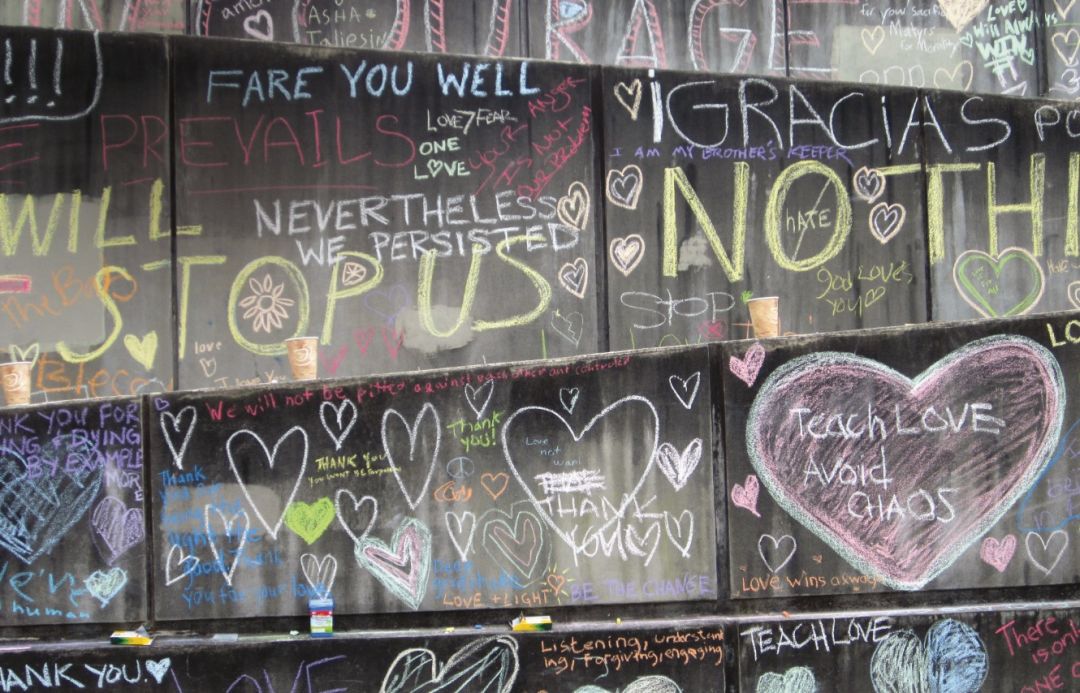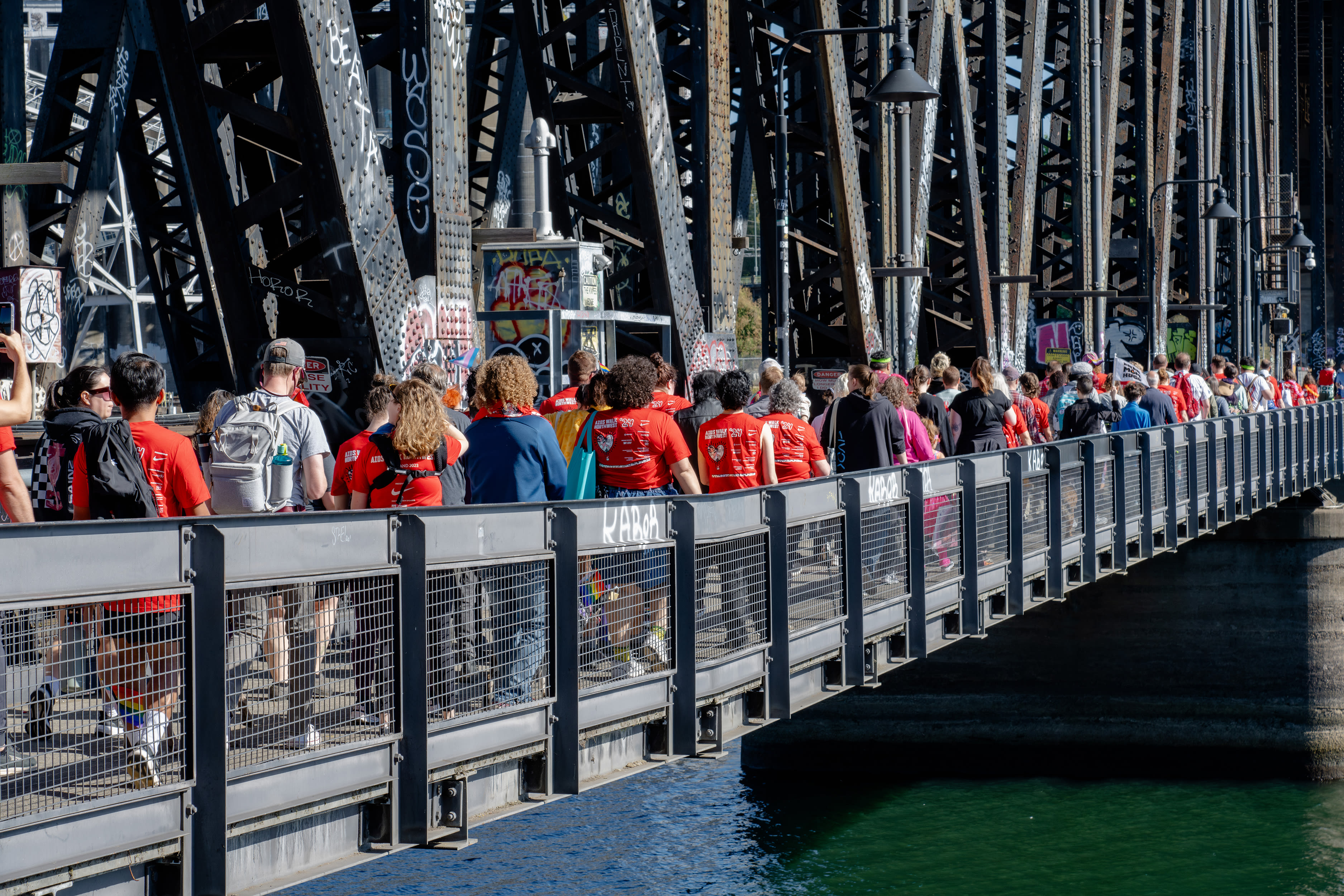In Response to the MAX Attacks

A sliver of the memorial at the Hollywood Transit Center
Image: Margaret Seiler
On May 26, the Portland Monthly staff left the office for Memorial Day weekend with the July issue just about finished and ready to send to our printers on May 30. We headed out into the sunshine.
The reported chain of events would reveal that the stabbings on an eastbound MAX train that killed two and wounded one occurred at around 4:30 p.m. that day. By now, everyone has heard the story many times: a group of passengers intervened to shield two young women of color, one in a hijab, from a man delivering a racially charged rant. The man pulled a knife.
The violent tragedy has drawn international attention, mustered hundreds of Portlanders to grieve in the streets of Northeast, and inspired hundreds of thousands of dollars in donations to the victims and their families. It has awakened discussion of Portland’s long, grim history of racism, and stirred fears of more confrontations to come. The attack has also highlighted the surreal contrasts of life right now: the divide between regular daily normalcy in a great but imperfect city, with all its joys and trials, and the dark and surreal forces warping the public sphere.
At Portland Monthly, we cover our city and times as best we can. We are grateful for our colleagues at the Oregonian, Willamette Week, the Portland Mercury, the Portland Tribune, Oregon Public Broadcasting, and other hardworking local radio and television news operations. They’re writing history’s first draft on this one, and the vital importance of that service is evident.
Alongside real-time reporting from these outlets, we’ve been reading pieces from the vaults, like this one from the Oregonian about one of the heroes from last week, a two-time Verselandia poetry slam winner who took to writing “to give voice to the injustices he saw in the world.” The Mercury gave us a roundup of the fundraising efforts for the victims and the families of those who died, while KOIN’s Jeff Gianola reached a wide audience with a Facebook post recalling the opening of MAX light rail back in 1986, and the murder of Ethiopian student Mulugeta Seraw by white supremacists that followed soon after, threading a line through the past 30 years to present-day Portland. Corey Pein at Willamette Week wrote about a personal interaction with the alleged killer just weeks before the MAX stabbings, seeming to signal what was to come.
Beyond our local media, the national lens has turned on the city. Zahir Janmohamed’s piece for CNN is a revealing first-person take on what it’s really like to live as a person of color in Portland, while Oregon native and New York Times columnist Nicholas Kristof found the “best of our nation” on that train.
Our July issue, meanwhile, is what it is: not a tonal match for some of what is happening in our city or world, but a heartfelt look at some of Portland’s new and abiding charms, and a few of its long-standing troubles. We always try to show what makes this place great. In that spirit, we humbly dedicate this issue of Portland Monthly to the people who defended their neighbors on that train: Ricky John Best and Taliesin Myrddin Namkai-Meche, who died; Micah David-Cole Fletcher, who lived.
In that moment, they were us at our best, and we will not forget.
Zach Dundas
Editor in Chief




